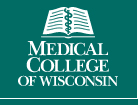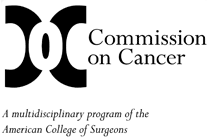Stereotactic Body Radiation Therapy in Treating Patients With Stage I or Stage II Non-Small Cell Lung Cancer That Can Be Removed By Surgery
| Status: | Completed |
|---|---|
| Conditions: | Lung Cancer, Lung Cancer, Cancer |
| Therapuetic Areas: | Oncology |
| Healthy: | No |
| Age Range: | 18 - Any |
| Updated: | 12/20/2018 |
| Start Date: | December 2007 |
| End Date: | May 14, 2018 |
A Phase II Trial of Stereotactic Body Radiation Therapy (SBRT) in the Treatment of Patients With Operable Stage I/II Non-Small Cell Lung Cancer
RATIONALE: Stereotactic body radiation therapy may be able to send x-rays directly to the
tumor and cause less damage to normal tissue near the tumor.
PURPOSE: This phase II trial is studying how well stereotactic body radiation therapy works
in treating patients with stage I or stage II non-small cell lung cancer that can be removed
by surgery.
tumor and cause less damage to normal tissue near the tumor.
PURPOSE: This phase II trial is studying how well stereotactic body radiation therapy works
in treating patients with stage I or stage II non-small cell lung cancer that can be removed
by surgery.
OBJECTIVES:
Primary
- Determine whether treatment with radiotherapy involving a high biological dose with
limited treatment volume (using stereotactic body radiotherapy [SBRT] techniques)
achieves acceptable primary tumor control (i.e., ≥ 90% at 2 years) in patients with
resectable early-stage non-small cell lung cancer.
Secondary
- Determine whether treatment with radiotherapy involving a high biological dose with
limited treatment volume (using SBRT techniques) achieves acceptable treatment-related
toxicity.
- Estimate the disease-free survival and the overall survival rate at 2 years.
- Observe patterns of failure in the first 2 years.
- Assess the level of comorbidity burden on morbidity and efficacy.
- Determine if blood markers prior to, during the course of treatment (between the second
and the last dose of SBRT), and at the first follow-up after SBRT predict 2-year primary
tumor control and predict for grade ≥ 2 treatment-related toxicities
OUTLINE: This is a multicenter study.
Patients receive 3 fractions of stereotactic body radiotherapy over 14 days. Patients with
disease progression undergo surgical resection as salvage local therapy.
After completion of study therapy, patients are followed every 3 months for 2 years, every 6
months for 3 years and then annually thereafter.
Primary
- Determine whether treatment with radiotherapy involving a high biological dose with
limited treatment volume (using stereotactic body radiotherapy [SBRT] techniques)
achieves acceptable primary tumor control (i.e., ≥ 90% at 2 years) in patients with
resectable early-stage non-small cell lung cancer.
Secondary
- Determine whether treatment with radiotherapy involving a high biological dose with
limited treatment volume (using SBRT techniques) achieves acceptable treatment-related
toxicity.
- Estimate the disease-free survival and the overall survival rate at 2 years.
- Observe patterns of failure in the first 2 years.
- Assess the level of comorbidity burden on morbidity and efficacy.
- Determine if blood markers prior to, during the course of treatment (between the second
and the last dose of SBRT), and at the first follow-up after SBRT predict 2-year primary
tumor control and predict for grade ≥ 2 treatment-related toxicities
OUTLINE: This is a multicenter study.
Patients receive 3 fractions of stereotactic body radiotherapy over 14 days. Patients with
disease progression undergo surgical resection as salvage local therapy.
After completion of study therapy, patients are followed every 3 months for 2 years, every 6
months for 3 years and then annually thereafter.
DISEASE CHARACTERISTICS:
- Histologically or cytologically confirmed non-small cell lung cancer, including any of
the following primary tumor types:
- Squamous cell carcinoma
- Adenocarcinoma
- Large cell carcinoma
- Large cell neuroendocrine tumor
- Non-small cell carcinoma not otherwise specified
- No pure type bronchoalveolar cell carcinoma
- Stage I or II disease based on 1 of the following combinations of primary tumor,
regional nodes, metastasis (TNM) staging:
- T1, N0, M0
- T2 (≤ 5 cm), N0, M0
- T3 (≤ 5 cm), N0, M0 (chest wall primary tumors only)
- No T2 or T3 primary tumors > 5 cm or T3 primary tumors involving the central chest and
structures of the mediastinum
- No primary tumor of any T-stage within or touching the zone of the proximal bronchial
tree, defined as a volume of 2 cm in all directions around the proximal bronchial tree
(carina, right and left main bronchi, right and left upper lobe bronchi, intermedius
bronchus, right middle lobe bronchus, lingular bronchus, or right and left lower lobe
bronchi)
- Patients with hilar or mediastinal lymph nodes ≤ 1 cm AND no abnormal hilar or
mediastinal uptake on positron emission tomography (PET) scan will be considered N0
- Patients with > 1 cm hilar or mediastinal lymph nodes on CT scan OR abnormal PET
scan (including suspicious but nondiagnostic uptake) will still be eligible if
directed tissue biopsies of all abnormally identified areas are negative for
cancer
- No direct evidence of regional or distant metastases after appropriate staging studies
- Considered a reasonable candidate for surgical resection of the primary tumor,
according to the following criteria:
- Primary tumor predicted to be technically resectable with a high likelihood of
negative surgical margins (as determined by a qualified thoracic surgeon)
- Baseline forced expiratory volume (FEV)_1 > 35% predicted
- Postoperative predicted FEV_1 > 30% predicted
- Diffusion capacity > 35% predicted
- No hypoxemia (e.g., partial pressure of arterial oxygen (PaO2) of ≤ 60 mm Hg)
and/or hypercapnia (e.g., partial pressure of arterial carbon dioxide (PaCO2) >
50 mm Hg) at baseline
- No severe pulmonary hypertension
- No severe cerebral, cardiac, or peripheral vascular disease
- No severe chronic heart disease
- Pleural effusion, if present, must be deemed too small to tap under CT scan guidance
and must not be evident on chest x-ray
- Pleural effusion that appears on chest x-ray will be allowed only after
thoracotomy or other invasive procedure
PATIENT CHARACTERISTICS:
- Zubrod performance status 0-1
- Absolute neutrophil count ≥ 1,800/mm³
- Platelet count ≥ 100,000/mm^3
- Hemoglobin ≥ 8.0 g/dL (transfusion allowed)
- Not pregnant or nursing
- Negative pregnancy test
- Fertile patients must use effective contraception
- No synchronous primary or other invasive malignancy within the past 3 years other than
nonmelanoma skin cancer or in situ cancer
- No active systemic, pulmonary, or pericardial infection
- No weight loss > 5% for any reason within the past 3 months
PRIOR CONCURRENT THERAPY:
- No prior radiotherapy for lung cancer
- Prior radiotherapy as part of treatment for head and neck cancer, breast cancer,
or other non-lung cancer is allowed provided there will not be significant
overlap with the stereotactic body radiotherapy fields
- No prior chemotherapy or surgical resection for this lung cancer
- No other concurrent local or regional antineoplastic therapy (including standard
fractionated radiotherapy, non-approved systemic therapy, and surgery), except at
disease progression
We found this trial at
19
sites
Memorial Hospital of South Bend Memorial Hospital of South Bend is a community-owned, not-for-profit corporation...
Click here to add this to my saved trials
UAB Comprehensive Cancer Center One of the nation’s leading cancer research and treatment centers, the...
Click here to add this to my saved trials
2201 Inwood Rd
Dallas, Texas 75235
Dallas, Texas 75235
(214) 645-8300

Simmons Comprehensive Cancer Center at University of Texas Southwestern Medical Center - Dallas From its...
Click here to add this to my saved trials
800 Rose St
Lexington, Kentucky 40536
Lexington, Kentucky 40536
(859) 257-4488

Lucille P. Markey Cancer Center at University of Kentucky The Markey Cancer Center was founded...
Click here to add this to my saved trials
2279 45th Street
Sacramento, California 95817
Sacramento, California 95817
(916) 734-5800

University of California Davis Cancer Center At UC Davis Comprehensive Cancer Center, specialized teams of...
Click here to add this to my saved trials
1 Medical Center Blvd
Winston-Salem, North Carolina 27103
Winston-Salem, North Carolina 27103
(336) 716-2011

Wake Forest University Comprehensive Cancer Center Our newly expanded Comprehensive Cancer Center is the region’s...
Click here to add this to my saved trials
Click here to add this to my saved trials
Click here to add this to my saved trials
St. Joseph Cancer Center The PeaceHealth St. Joseph Cancer Center offers a full-range of services...
Click here to add this to my saved trials
2450 Ashby Ave.
Berkeley, California 94705
Berkeley, California 94705
(510) 204-4444

Alta Bates Summit Comprehensive Cancer Center Our Comprehensive Cancer Services are comprised of exceptional, state-of-the-art...
Click here to add this to my saved trials
Click here to add this to my saved trials
250 Cherry St SE
Grand Rapids, Michigan 49503
Grand Rapids, Michigan 49503
(616) 685-5225

Lacks Cancer Center at Saint Mary's Health Care Mercy Health Lacks Cancer Center was one...
Click here to add this to my saved trials
Click here to add this to my saved trials
Click here to add this to my saved trials
8800 W. Doyne Avenue
Milwaukee, Wisconsin 53226
Milwaukee, Wisconsin 53226
(414) 805-6840

Medical College of Wisconsin Cancer Center Cancer touches everyone in our community, and for many,...
Click here to add this to my saved trials
160 E 34th St
New York, New York 10016
New York, New York 10016
(212) 731-5001

NYU Cancer Institute at New York University Medical Center The Perlmutter Cancer Center takes a...
Click here to add this to my saved trials
Click here to add this to my saved trials
Click here to add this to my saved trials
3 Edmund D. Pellegrino Road
Stony Brook, New York 11794
Stony Brook, New York 11794
(631) 638-1000

Stony Brook University Cancer Center Ask a cancer survivor. Having highly advanced care close to...
Click here to add this to my saved trials


